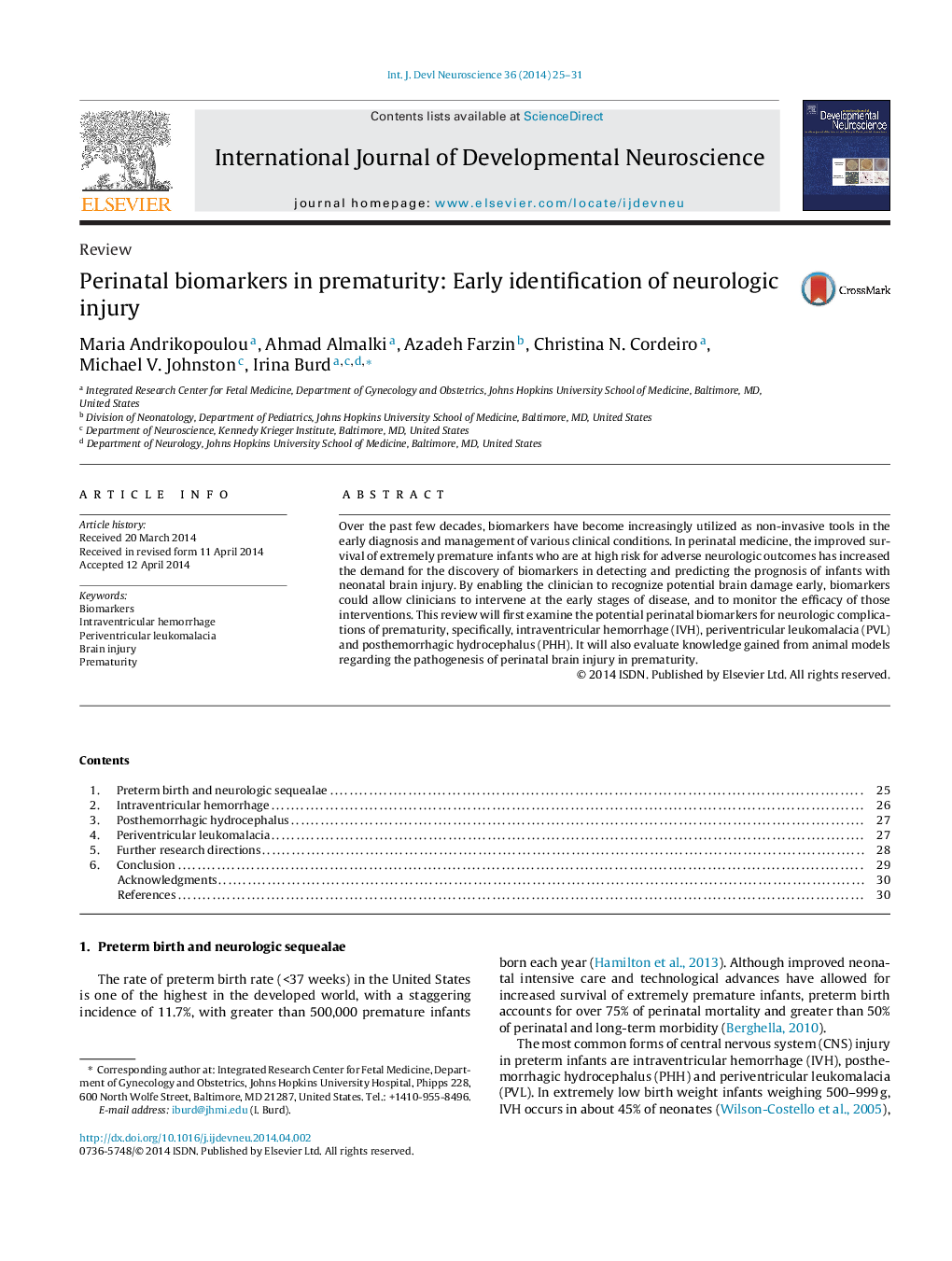| Article ID | Journal | Published Year | Pages | File Type |
|---|---|---|---|---|
| 2785901 | International Journal of Developmental Neuroscience | 2014 | 7 Pages |
•There is a growing body of evidence, indicating that biomarkers will constitute a useful tool for the early prediction of brain injury in preterm neonates.•Yet, there is no reliable marker of combination of markers in the amniotic fluid, cord blood, neonaal blood or maternal serum.•There is an urgent need for future studies aimed at identifying single- and multi- marker strategies to enable early diagnosis in order to prevent adverse neurological sequelae in preterm neonates.
Over the past few decades, biomarkers have become increasingly utilized as non-invasive tools in the early diagnosis and management of various clinical conditions. In perinatal medicine, the improved survival of extremely premature infants who are at high risk for adverse neurologic outcomes has increased the demand for the discovery of biomarkers in detecting and predicting the prognosis of infants with neonatal brain injury. By enabling the clinician to recognize potential brain damage early, biomarkers could allow clinicians to intervene at the early stages of disease, and to monitor the efficacy of those interventions. This review will first examine the potential perinatal biomarkers for neurologic complications of prematurity, specifically, intraventricular hemorrhage (IVH), periventricular leukomalacia (PVL) and posthemorrhagic hydrocephalus (PHH). It will also evaluate knowledge gained from animal models regarding the pathogenesis of perinatal brain injury in prematurity.
